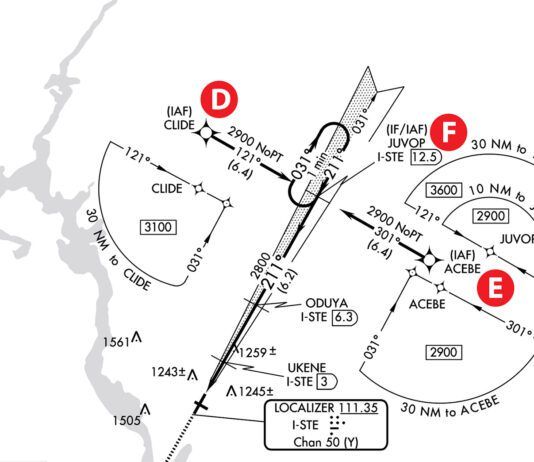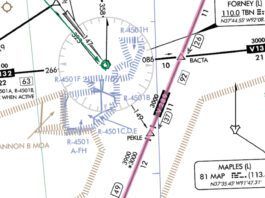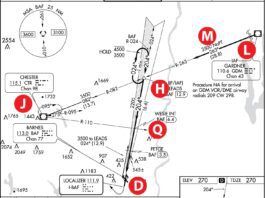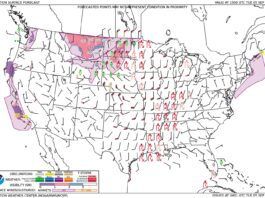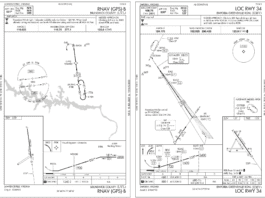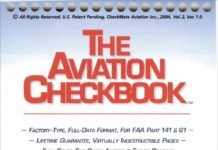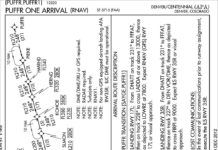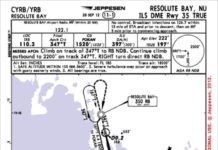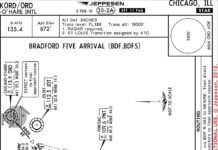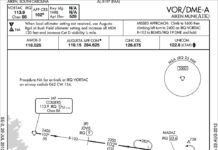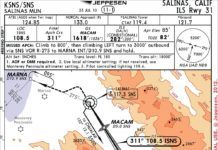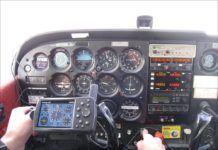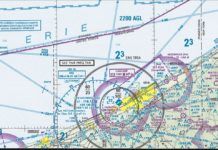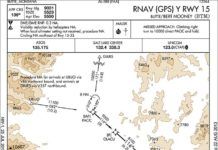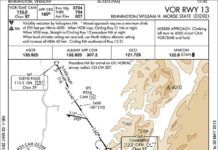Do-List vs. Checklist
Checklist…checklist…checklist. Its been drummed into us to use a checklist since our first lesson. And, indeed, we should be using a checklist. Unfortunately, most of the so-called checklists out there are actually do lists-step-by-step instructions on how to do stuff, formatted in checklist form. Of course, do-lists have their place during training, but most accomplished pilots should be using a checklist. …
Crossing Restrictions
Awhile back we got a note from a reader based at Denver Centennial. He was concerned about a speed restriction on their ILS Runway 35R. We did a little digging and found that the FAA had already concluded this wasnt such a good idea and removed the restriction. However, this still makes good fodder for these pages, so lets take a closer look.
High-Latitude Approach
You asked for an iPad 4 last month, but the guy in the red suit brought you a mini. You want to visit him to discuss his error, so you plan a trip to the airport closest to the north (magnetic) pole: Resolute Bay. But, when you open the approach plates, youre confused.
Lead Radial tip-offs
Despite the quips about aviator egos barely fitting inside the cockpits that carry them, pilots have a high tolerance for following directions.
Mag Course mismatches
I looked at the arrivals into Chicago OHare and noticed something peculiar. Both the BENKY ONE and BRADFORD FIVE arrivals have a transition route from Kirksville VOR (IRK) to LOAMY intersection. But the BENKY arrival shows a course of 068 degrees while the BRADFORD arrival shows 059. I put IRK direct to LOAMY in my GPS ... and got a third course of 064.
No-arrival sectors
What is it with arbitrary rules and aviation? Like how some security Ph.D. determined that a quart bag of three-ounce containers dont constitute a security threat but a single quart of Pepsi does. Maybe they think terrorists arent smart enough to pool their resources. Or maybe the TSA brass just has something against soft drinks.
No Two-for-one here
Fly IFR enough and reading an approach plate becomes something akin to ordering at your favorite diner. You know everything on the menu. When Lorna the waitress tells you theyre fresh out of the sweet potato fries that let you pretend youre getting a vegetable with your triple-bypass cheeseburger, you call for the onion rings instead without asking for your options. Hey, onions are vegetables too, right?
Direct to a fix with /U
Flying the system without an IFR GPS these days can be a frustrating experience. Youre plodding along the airways while you listen to more-equipped birds getting time-saving directs off-route.
Varied TRSA Depictions
In-betweens are always tough, and have the potential for trouble. Flying some IFR practice in VFR conditions is a perfect example. Youre emulating one set of rules (IFR) but youre actually bound by another set (VFR). There are all sorts of potential traps here: maintaining cloud clearances, conflicting with traffic youd normally be separated from, and blundering into airspace without the required communication or permission.
Missing the Point
Few situations require quick judgment like deciding to go missed with weather at minimums. Arriving at missed approach point or decision altitude, the pilot must determine if the runway environment is in sight and the required flight visibility is evident. If these conditions are met, is the aircraft in a position to land and is the runway condition suitable? All of this must be accomplished while flying through a sea of obstructions at about 150…
Black Box for GA
Long the purview of sophisticated flight data recorders available only to airlines, many of the popular integrated TAA systems being installed today can record all the critical-and embarrassing-data about your flight. Activating a data logging feature typically calls for little more than inserting a memory card in a slot; the machine does the rest. …
On Your Own in Class G
According to 14 CFR 91.173, an IFR flight plan and clearance are only required for flight in controlled airspace, yet most of us have to at least occasionally depart airports within Class G airspace, essentially the only uncontrolled airspace we use. Class G usually ends at 700 or 1200 feet AGL, though there are remote places where its all the way up to 14,500 feet. Other than this, there is little guidance in the regulations…

